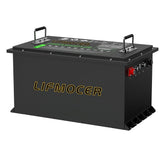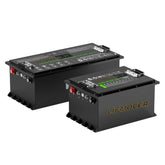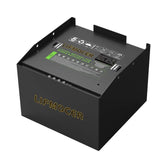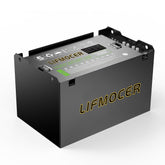Guide to Common Lithium Battery Issues
Common Lithium Battery Issues Overview
Lithium battery is driven by high energy density and long cycle life to revolutionize consumer electronics, popularize electric vehicles, and scale up industrial energy storage. However, hidden problems such as thermal runaway, sudden drop in capacity, and mechanical abuse occur frequently with the complexity of application scenarios, leading to equipment failures, safety accidents, and rising economic risks. This paper focuses on the core issues of lithium battery failure, and puts forward technical countermeasures and protection guidelines from the aspects of material design, battery management system (BMS) optimization, and user safety specifications, in order to provide practical solutions for balancing the efficiency and safety of lithium batteries.
Why Lithium Battery Not Charging
Lithium ion battery charging problem is mostly due to cell aging, BMS protection or charger mismatch, according to the following steps to quickly check and solve the problem:
1. Cell performance Degradation
Performance: Charging current is extremely low (such as <0.1A), the power is false, the body heat abnormality. Treatment: If the battery cycle exceeds 500 times (cell phone) or 800 times (electric car), or the voltage <3.2V and charging is not responsive, directly replace the battery with a new one, and strong charging may trigger a short circuit.
2. BMS (Battery Management System) Protection Abnormality
Common scenarios:
- Over-discharge protection: Battery voltage falls below the safety threshold (e.g. below 2.8V), charging needs to be activated;
- Temperature abnormality: BMS automatically locks up when the environment is >45℃ or <0℃;
- Hardware failure: interface oxidization, broken sampling line or dead chip.
First aid: Move the battery to 15-35℃ room temperature and leave it for 30 minutes or reset lithium battery BMS; If the battery is bulging, leaking or the interface is scorched black, stop operation immediately and send it for repair.
3. Charger/interface Incompatibility
Phenomenon: charger indicator flashes abnormally, loose wire contact, no current input.
Solution: Use the original or support the battery fast charging protocol (such as PD/QC) charger, avoid “fast charger + slow charging cable” mix and match; Clean the charging port of dust, replace the broken skin or broken cable.
Safety Must Know:
It is forbidden to dismantle the battery violently, bake it with open flame or pierce the battery core; If repair is ineffective, use the internal resistance meter to test the consistency of the battery cell (pressure difference > 0.1V requires professional capacitance splitting) to avoid fire caused by imbalance of the battery cell.
Lithium Battery Expansion Causes And Solutions
The essence of lithium battery swelling is the “distress signal” of internal chemical control, and the following triggers need to be alerted immediately:
- Overcharging lithium battery: charging voltage exceeds the upper limit (e.g. 4.2V), leading to electrolyte decomposition, anode materials precipitation of oxygen, and gas buildup breaks the diaphragm;
- High temperature environment: Long-term exposure to an environment of >50℃ or poor heat dissipation during rapid charging accelerates electrolyte decomposition and gas production by side reactions; this buildup can lead to thermal runaway in lithium batteries, where heat generation becomes uncontrollable, significantly increasing battery safety risks such as fire or explosion.
- Physical damage: puncture, extrusion or falling leads to diaphragm breakage, and direct contact between positive and negative electrodes triggers internal short-circuit and heat generation.
![]() Avoid charging in environments over 45℃ to prevent BMS lock-up.
Avoid charging in environments over 45℃ to prevent BMS lock-up.
Three principles of safe handling:
- Immediate deactivation: Expanded batteries can not continue to charge or use, to avoid short-circuit fire;
- Prohibit violent operation: Do not puncture, squeeze or disassemble the battery, which may cause electrolyte leakage, splashing or explosion;
- Professional recycling: after wrapping the battery with insulating tape, send it to a qualified electronic waste recycling center (available through the municipal official website) to avoid landfill/incineration pollution of the environment.
Lithium Battery Voltage Drop Issue
Lithium battery voltage dips refer to the sudden drop in voltage during the discharge process, which often triggers unexpected shutdown of equipment or lack of power at high loads. Its core triggers include:
- Aging of the battery core: crystallization of cathode material and decomposition of electrolyte cause internal resistance to climb up, and the voltage is instantly pulled down when discharging with high current;
- BMS calibration offset: power calculation error accumulates after long-term use, misjudging the remaining capacity and triggering low voltage protection in advance;
- Poor contact: oxidized or loosely welded battery terminals increase the line voltage drop and aggravate the apparent voltage fluctuation.
Repair Path: Voltage calibration can be performed on individual cells through a professional charger to restore inter-group consistency, while cleaning terminal corrosion and tightening wiring bolts to ensure that there is no additional loss in the current path, and finally resetting the SOC parameters with diagnostic tools to correct the BMS calibration error.
Resetting a Lithium Ion Battery Safely
When the lithium-ion battery cannot be recharged due to the trigger of BMS protection mechanism (e.g. over-discharge resulting in a voltage <2.8V) or after long-term under-voltage storage, it needs to be restored to its activity by a safety reset. The operation steps are as follows:
- Disconnect: First remove the physical connection between the battery and the device to ensure a no-load condition;
- Soft-start charging: Use a smart charger that supports trickle mode to slowly charge the battery with a current of 1/10 of its nominal capacity (e.g., 100mA for 1000mAh battery) to avoid a sudden rise in voltage triggering the continuous protection of the BMS;
- Standing observation: the battery may not respond at the beginning of charging, it needs to stand for 4-6 hours to wait for the electrolyte to infiltrate the battery cell and then continue charging;
- Judgment termination: if the voltage is still below 3.0V or the battery is hot after 24 hours, stop operation immediately and contact the manufacturer, the battery cell may have been irreversibly damaged at this time.
Key warning: Prohibit the use of non-standard tools such as “activation board” to force restart, which may lead to short circuit; Freezing method or deep discharge is only available in laboratory environment, and is extremely risky for ordinary users.
Signs Of a Bad Lithium Batteries
The failure of lithium batteries is usually accompanied by obvious abnormal signals, you need to pay close attention to the following signs:
- Diving capacity: the actual battery life of the nominal 2000mAh is less than 500mAh, or the percentage of power plummeted after charging;
- Abnormal heat: charging or use of the battery temperature exceeds 45 ℃, and even hot;
- Appearance aberration: shell bulging, deformation or scorch marks on the surface, electrolyte leakage;
- Abnormal behavior: intermittent charging, chaotic jumps in the power display or frequent and unexpected shutdown of the device.
Early detection and disposal: The above signs are the “final warning” of a chemical imbalance within the battery, which may lead to a short circuit, fire or even explosion if the battery continues to be used. It is recommended to regularly test the consistency of the internal resistance and voltage of the battery with professional tools, and immediately terminate the use of the battery and standardize the recycling of the battery if any abnormality occurs.
Lithium ion Battery Suddenly Stopped Working
Lithium battery sudden shutdown is mostly triggered by the following reasons:
- Undervoltage protection: the battery voltage falls below the BMS threshold (e.g. below 2.8V), the system automatically cuts off the output;
- Short-circuit failure: accidental short-circuit of positive and negative terminals, loose connectors or blown fuses lead to interruption of the pathway;
- BMS out of control: chip crash, broken sampling line or abnormal software algorithm triggers false protection.
Emergency treatment steps:
Firstly, disconnect the power supply, check whether the connector is loose, whether the fuse is blown, and measure the voltage with a multimeter (activation is required if <3.0V). If the hardware is normal, try to reset it safely (e.g. short the reset button or charge it with low current after resting). If there is still no response, the battery may have been damaged internally, and should be replaced immediately and handed over to a professional organization for recycling, to avoid the risks caused by private disassembly.
References
Battery University – BU-808: How to Prolong Lithium-based Batteries
TÜV SÜD – Lithium-Ion Battery Storage & Handling
Asurion-5 Common Myths About The Batteries In Your Favorite Tech

















